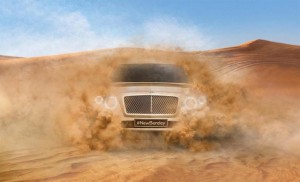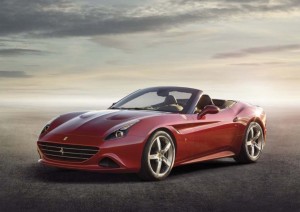Whether it’s the result of a booming stock market, the overall economy or other factors, the rich are getting behind the wheel of some of the world’s most expensive automobiles at a record pace – so much so that one manufacturer has put a limit on production to maintain its exclusivity.
As expensive as a Rolls-Royce or Bentley might be “off the rack,” the premium luxury carmakers also report a record number of buyers are choosing to customize their vehicles, at times, doubling, even tripling the basic price tag.
“There is no question that some markets will remain tough but we are confident of a good 2014,” said Kevin Rose, the board member overseeing sales, service and marketing at Britain’s Bentley Motors.
Based in the city of Crewe, the Volkswagen AG subsidiary already posted record volume in 2013, delivering 10,120 vehicles, a 19% jump from the year before. If the current trend continues, Bentley will likely manage to get its fifth straight annual double-digit increase in 2014, sales for the first half of the year rising 19%, to 5,254 cars.
The bulk of the demand is for variations of Bentley’s Continental line-up, including the GT coupe, GTC convertible and Flying Spur “saloon car,” or sedan. That’s the maker’s “entry-level” model, if one can use such a phrase to describe an automobile that starts just over $200,000.
(Bentley puts a premium on performance with new GT3-R. Click Here to check it out.)
But demand has also been surging for the more exclusive, top-line Mulsanne, at over $300,000. And that price tag is just a starting point, as buyers routinely order custom features that can include adding their initials or ordering the leather upholstery in an unusual shade, perhaps to match a favorite shade of lipstick. Bentley has developed a mobile technology system that adds a range of high-tech features to its products. But some buyers will order even more extensive changes that can push the price tag well above the $500,000 mark.
Bentley’s primary British competitor – and one-time partner, Rolls-Royce, says about half of its buyers chose a “bespoke” package, perhaps in line with a good Saville Row suit. Champagne chillers and cigar humidors are among the frequent additions.
Rolls also is following up on a record year, in this case reporting a 33% rise for the first half of 2014. It sold about 1,968 of its various models through the end of June. Rolls has traditionally had a more posh image than Bentley, and its products, such as the “base” Ghost line, which begins at $250,000, and the big Phantom, starting at around $400,000.
Why have sales of such expensive models been booming? In fact, demand for luxury models slumped even more sharply than those for mainstream models during the depths of the Great Recession, noted analyst Joe Phillippi, of AutoTrends Consulting, perhaps because potential buyers didn’t necessarily want to be seen as acting extravagantly while companies they might have owned were cutting back.
It’s not just now a matter of catching back up, but also a case of a rapidly expanding set of buyers. According to Forbes, there are now 1,645 billionaires in the world, about 15% more than a year ago. And when you add in the mere mega-millionaires who still could afford such trappings of luxury, industry analysts estimate there are enough potential customers to continue growing the ultra-premium segment.
“Clearly, the luxury end of the (car) market is more robust” than the mainstream segments, said Stephen Odell, president of Ford of Europe.
Bentley and Rolls are both looking at ways to grab even more buyers. The VW subsidiary will bring an all-new premium SUV to market about a year from now, and Rolls, which is owned by Germany’s BMW, may follow that path, as well.
(Rolls-Royce explores options for a “proper” SUV. Click Here for the story.)
The long-running debate is whether there is – or should be – a limit to demand. So far, analysts like Phillippi believe, the most prestigious carmakers have been able to build sales without damaging their brand image. In part, that’s because they’ve grown their global footprints by targeting promising new markets like China. Indeed, the People’s Republic has already become the largest outlet for some luxury marques and may soon pass the U.S. in sales of the most exclusive models.
(Aston Martin unveils biggest product program in its history. Click Here to find out what’s coming.)
That said, some manufacturers remain concerned about the potential to dilute their brands. Ferrari, for one, planned to scale back production to around 7,000 vehicles annually, off from more than 7,300 in 2012.
“The exclusivity of Ferrari is fundamental for the value of our products,” the maker’s chairman Luca di Montezemolo told journalists last year. “We don’t sell a normal product. We sell a dream.”



There is no economic recession for the wealthy so it’s no surprise they continue to enjoy new toys.